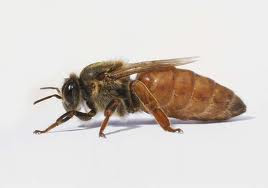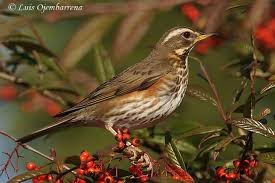Friday, November 11, 2011
The Jaguar
The jaguar is a big cat, the only Panthera species found in the Americas. The jaguar is the third-largest feline after the tiger and the lion, and the largest in the Western Hemisphere. The jaguar's present range extends from Southern United States and Mexico across much of Central America and south to Paraguay and northern Argentina.
The jaguar is a near threatened species and its numbers are declining. Threats include habitat loss and fragmentation. While international trade of jaguars or their parts is prohibited, the cat is still frequently killed by humans, particularly in conflicts with ranchers and farmers in South America.
While dense rainforest is its preferred habitat, the jaguar will range across a variety of forested and open terrain. It is strongly associated with the presence of water and is notable, along with the tiger, as a feline that enjoys swimming.
The jaguar is largely a solitary, opportunistic, stalk-and-ambush predator at the top of the food chain (an apex predator). It is a keystone species, playing an important role in stabilizing ecosystems and regulating the populations of the animals it hunts.
Tuesday, August 9, 2011
Moles
They have cylindrical bodies covered in fur with small or covered eyes; the ears are generally not visible.
A mole's diet primarily consists of earthworms and other small invertebrates found in the soil and also a variety of nuts.

Friday, May 13, 2011
The white-eared opossum
As I entered the classroom today many of the students were gazing out of the second story window at the white-eared opossum that had found its way up to the top branches of the big american oak tree. Hiding itself among the orange and green autumn leaves she was moving her ears gently as aware of us as we were of her!
It is a terrestrial and, sometimes, arboreal animal. It's an omnivorous mammal, feeding on invertebrates, small vertebrates, fruits and plants. It might have been feeding on the acorns, some snail, or simply feeling safe from the children way up at the top of the tree.
To us it was the perfect excuse to go into Science research and inquiry. This for the students who had just finished their English exam!
Tuesday, March 29, 2011
What is the queen bee fed?
The term queen bee is typically used to refer to an adult, mated female that lives in a honey bee colony or hive; she is usually the mother of most, if not all, the bees in the hive.
The queens are developed from larvae selected by worker bees and specially fed in order to become sexually mature. There is normally only one adult, mated queen in a hive.
The young queen larva develops differently because it is more heavily fed royal jelly, a protein-rich secretion from glands on the heads of young workers. If not for being heavily fed royal jelly, the queen larva would have developed into a regular worker bee.
All honey bee larvae are fed some royal jelly for the first few days after hatching but only queen larvae are fed on it exclusively. As a result of the difference in diet, the queen will develop into a sexually mature female, unlike the worker bees.
All honey bee larvae are fed some royal jelly for the first few days after hatching but only queen larvae are fed on it exclusively. As a result of the difference in diet, the queen will develop into a sexually mature female, unlike the worker bees.
Monday, March 21, 2011
The Queen Bee
The queen bee
royal jelly she eats.
Six years she lives,
laying 1000 eggs a day!
Three months lives
the drone;
Two months,
the working bee.
Pollen, honey
and royal jelly they eat
as they work incessantly
during daylight.
They dance in front of the hive
giving information about where to find
the ingredients they need
to make the honey sweet!
Saturday, March 19, 2011
Black Mamba Snake
The black mamba is the longest venomous snake in Africa, averaging around 2.5 meters (8.2 ft), and sometimes growing up to 4.3 meters (14 ft).
The actual colour of the skin varies, from dull yellowish-green to a gun-metal gray. It is the fastest snake in the world, capable of moving at 4.5 to 5.4 metres per second (16–20 km/h, 10–12 mph).
The name "black mamba" is given to the snake not because of its body colour but because of its ink-black mouth. It displays this physical attribute when threatened.
Black mambas weigh on average about 1.6 kilograms (3.5 lb). The black mamba is the second longest venomous snake in the world, which is only exceeded in length by the king cobra. The snake also has an average life span of 11 years in the wild.
Monday, February 28, 2011
The Song Thrush (El Zorzal)
The Song Thrush or Zorzal is also known in English dialects as throstle or mavis. It has brown upperparts and black-spotted cream or buff underparts and has three recognised subspecies. Its distinctive song, which has repeated musical phrases, has frequently been referred to in poetry.
The Song Thrush builds a neat mud-lined cup nest in a bush or tree and lays four or five dark-spotted blue eggs. It is omnivorous and has the habit of using a favourite stone as an "anvil" on which to smash snails.
This is a monogamous territorial species, and in areas where it is fully migratory, the male re-establishes its breeding territory and starts singing as soon as he returns.
In the milder areas where some birds stay year round, the resident male remains in his breeding territory, singing intermittently, but the female may establish a separate individual wintering range until pair formation begins in the early spring.
The Song Thrush is omnivorous, eating a wide range of invertebrates, especially earthworms and snails, as well as soft fruit and berries.
Tuesday, January 25, 2011
The Southern Right Whales

Whale watching at Península Valdés is one of Argentina's greatest attractions! Twenty-meter-long southern right whales come to the Península Valdés in order to give birth and raise their young. They arrive at Valdés at the beginning of June and stay until the end of December.
 The whale watching tours leave from Puerto Pirámide on the Península Valdés by boat to set out to find the big southern right whales.
The whale watching tours leave from Puerto Pirámide on the Península Valdés by boat to set out to find the big southern right whales.They pass a pyramid shaped rock formation of which the town of Puerto Pirámide derives its name.

After sailing for another 10 minutes,the large female southern right whales can be spotted. In the distance you can clearly see something big surfacing and moving around. As the guide steeres you closer, the mother whale stretches her abdomen and sticks her five-meter-wide tail out of the water.
 While this large tail is standing up out of the water, the baby calf can be seen swimming around the mother and surfacing from time to time. There are also several seagulls who sit on the big fin and start picking away at it.
While this large tail is standing up out of the water, the baby calf can be seen swimming around the mother and surfacing from time to time. There are also several seagulls who sit on the big fin and start picking away at it.
That's why the whale only sticks out his head and tail, while keeping most of her body under water. The seagulls actually eat her skin and always pick at the same spot. The whale has a marked area on her fin where the seagulls are constantly picking at it. A 20-meter long whale, attacked and eaten by seagulls!

There are studies being done to try to reduce the amount of seagulls in the area since 2006 and the permission to actually start capturing them with nets and replacing them for further study was given during the first six months of 2010 by an authorized boat.
Saturday, January 15, 2011
House Sparrow

The House Sparrow is a very social bird. Today one of them visited our kitchen briefly before it flew out into the warm morning through the open door to the garden...
I used to sing about this friendly bird to our son when he was hospitalized with a broken leg. We could not see the sky from our little room in the hospital when my little two year old asked "Mum, can you call the doctors from the ambulance to take me home?" and chocking back my tears I tried to tell him that we needed to stay in the hospital for his bone to go back into place and then be able to set. So I sang about the friendly sparrow who visited our window and I prayed in my heart for God to heal and ease the pain!

Healing takes time but in the end the difficult tials we go through make us stronger and able to comfort others who undergo similar situations.
The little sparrow gifts us with his friendliness. It has been intentionally or accidentally introduced to many parts of the world, making it the most widely distributed wild bird. It is strongly associated with human habitations, but it is not the only sparrow species found near houses. It is a small bird, with feathers mostly different shades of brown and grey.
Subscribe to:
Posts (Atom)














